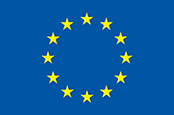The Underwater Vision Profiler or UVP (CNRS patent) is designed to study large (>100 µm) particles and zooplankton simultaneously and to quantify them in a known volume of water. The UVP system makes use of computerised optical technology with custom lighting to acquire digital images of zooplankton IN SITU down to depths of 6000m.
The UVP6-LP is a miniaturized and low price version of the UVP5. It has been designed for low speed, limited space and low power vectors like profiling floats, gliders, floats, moorings, AUVs…
It has been designed with the same quality standards than the UVP5 and provide an even higher resolution of 5Mp. It acquires only in-focus images in a volume of water delimited by a single red flashing light illuminating a volume of 0.65 Litre. The UVP6-LP are inter-calibrated with UVP5std and UVP5hd systems.
The UVP6-LP can transmit real time particle abundances to the vector and records vignettes of selected organisms and large aggregates as the UVP5 do. A future version will provide also an embedded classification of the images.
Warning: the UVP6-LP cannot be utilized on CTD rosette due to its 1.3Hz low acquisition frequency and 500µS flashes.
This sensor was developed in the frame of BRIDGES Program.


Operational depth: 0 to 6000 meters
Weight in air: 3.2 Kg
Weight in water: 1.5 Kg
Materials: titanium, glass, POM and aluminium (connecting arm)
Input voltage: 8-28 Vdc (0.1Watt@0.1Hz – 0.35Watt@0.5Hz – 1Watt@1.3Hz)
Interface: RS232, Ethernet, analog output
Lighting: 635nm, 500µS flashs
Resolution: 5Mpixels / 0.73µM
Field of view: 180 x 151mm
Max image frequency: 1.3Hz
Real time processing of images
Memory: 400Go
Option: 0.1% accuracy pressure sensor
Compatible with ECOTAXA: http://ecotaxa.obs-vlfr.fr/part/